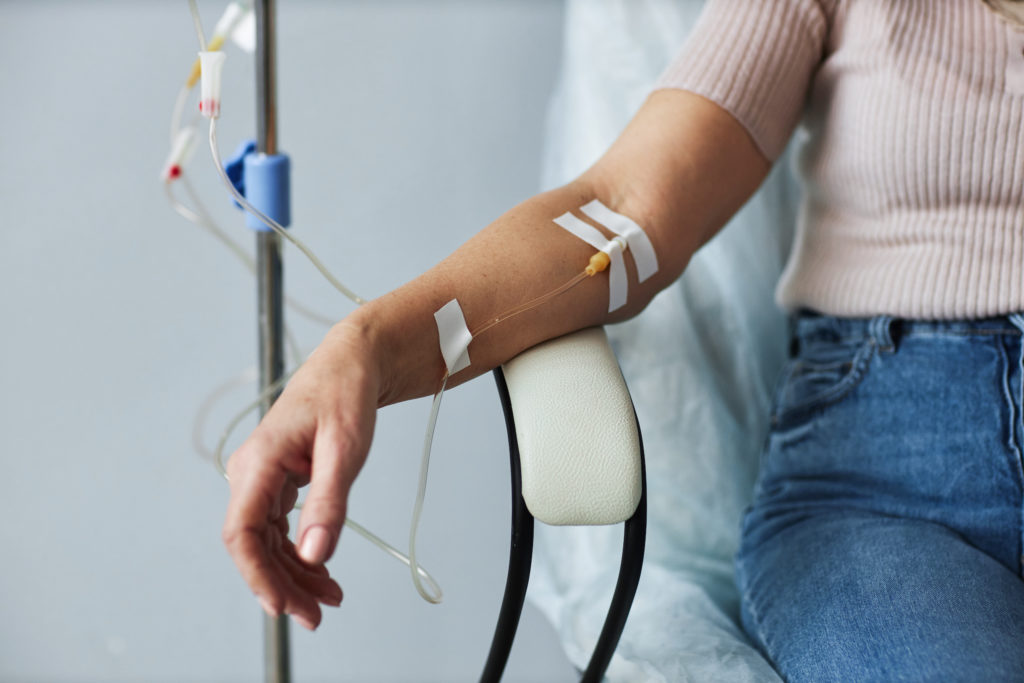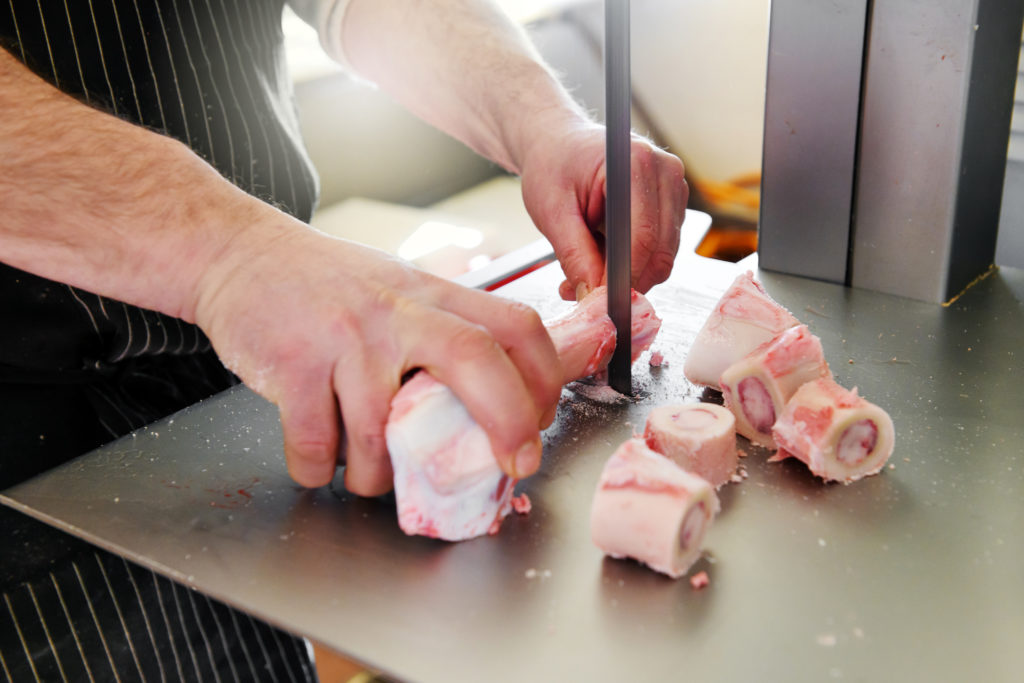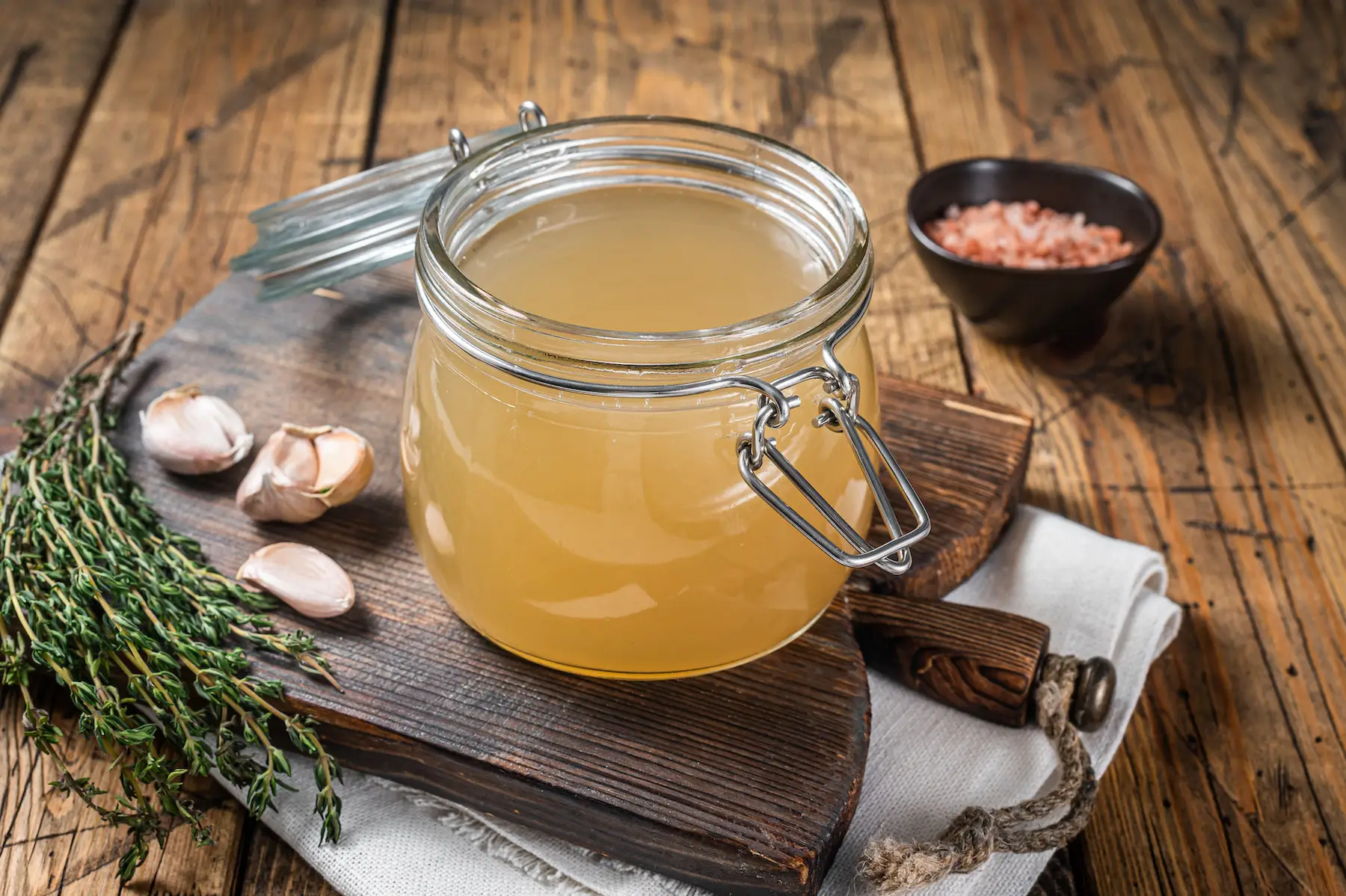Scientific communication
We introduced 24-hour bone broth as a treatment principle for iron deficiency anaemia after conducting trials that were scientifically validated and met the requirements of clinical trials. Budapest, 15 January 2020.
Don't believe everything you read...
In fact, it was a total coincidence. We weren't even dealing with that, we were trying to put together something tangible, something forward-looking, something publishable, in the area of microbiome-nutrition-epithelial regeneration-inflammatory bowel disease. It was catch 22. What comes first? Do we disrupt the bacterial flora (AB in food?), thereby altering the internal environment in the gut, leading to intestinal epithelial cell damage due to altered bacterial end-products (?), which activates the inflammatory elements of the immune system? Or is the composition of the bacteria altered by the inflammatory environment and the malabsorption is just a consequence? If we don't know what the root cause is, how can we intervene in a way that, if we mess up, causes the least damage? There were many questions and exactly none of them had anything to do with iron deficiency anaemia...[1]
„My Gastric Bypass surgery has been a spectacular success. The ONLY medical issue I have at the moment is low iron levels.” Something like this was the ad text that caught my attention. Okay, let's say the first thought was something like (not surprisingly to me) "this has been a really q*ckin' success so far..."
Then a compiled patient data (which had been lying neatly stapled together on my desk for weeks) was the final push to try it here. Obviously, it didn't occur to me that this alone might be enough to raise the immensely low iron levels, and it made it even more desperate that our meat-hating patient didn't jump at the idea of soaking shredded meat from the carcass of a dead animal in a concoction that she could sip with great relish on the sofa for weeks. The theory was that if the soup could actually contribute to the regeneration of the intestinal epithelium through the compounds it contained, the chain might be broken. Of course it would be nice to see a change in the bacterial composition, but at these prices there is no chance of that. However, the first idea was to do a transplantation at the time, but somehow it seemed a slightly more viable alternative than a gastro-jejunal probe to persuade him to eat soup instead. I only used the canula as a confirmation argument...for my own amusement.
Later on, it will become clear why this required completely uncompromised boneless meat. I was able to source from the Farm for a good few weeks and stuck with the more conservative veal. On the one hand, the goat and lamb (this is the "Let's make it a rabbit petting in the morning and a mustard rabbit in the afternoon? God forbid! These city folk won't be able to manage those two things together...!" story I learned) would have been way too much for both taste and emotional attachment. On the other hand, it would have taken quite a few animal bones to make enough for a longer cure.
I was really surprised by the lab test results. We were talking about a patient who had been on IV supplementation for years, so there was no meaningful explanation as to how this was achieved. I reviewed the labs again and had some thoughts, which I have stuck to (for now?):
- the rapid improvement (I remember it was 5-6 months) must have been due to the fact that the soup was new to the body. Therefore it was a rule from the beginning that it should only be used as a cure. Well, the availability of bone (seasonality) will solve that...
- because of the microbiome - bone antibiotic content - absorption triangle, I don't let the soup source out of my hands, I don't treat anyone with an "external bone source". I didn't know how important it was to be "all clean", but I didn't want the result to slip on that. I get that it's organic and all, but I had to exclude all the things that could complicate the interpretation of the results.
- because of the matrix theory, you shouldn't break down the soup into elements and try to rebuild it from elements, because on the one hand you might not be able to reproduce all the components correctly, and on the other hand you might "succeed" in creating side effects by shifting the proportions. This will not become an industrial product unless it is lyophilised...
- everyone should make their own soup, because cooking will be part of the therapy. We'll try to cut the 24 hours with a little practicality. Again, it follows from the above that the soup will not be a product, so there will be no funding for it and financing will be a long and difficult process...
I had expected that in the land of pork chops and chicken breasts there would be incredible resistance to the exclusion of both species at the start of the treatment, but on the bright side, vegans will definitely have an advantage here...
Since then, I have talked to many colleagues about this, always hastily adding that there are "a few" questions to be clarified about the above and that it is very timely to put some order into the story. It wouldn't hurt to see what of the appropriation I use that I am only unnecessarily burdening the patient with, and what, if I abandon it, will surely get us back to square one. I will obviously get answers to my questions as I go along, especially from those who stop treatment. But it wouldn't hurt to have a team specialising in physical exertion, measuring hormone levels, a haematologist who dares to try something new after six years of therapy. Not because it doesn't work without them, just so that you don't have to defend yourself all the time...
For the time being, there is no real explanation (which does not bother the patient at all), but there are a number of boundary conditions that could be used to fine-tune treatments. In the meantime, however, the current rules should be applied, with the additional therapeutic conditions (sleep, exercise, fluids, food, breathing) developed with experience. In iron-deficient anaemic patients. Even if this is not what we originally intended to do. It's all the same now...

The science behind bone broth
After that I scoured the internet for all kinds of studies. I don't think there was a search term combination I didn't use. There were tons of marketing-sounding articles, but I still wanted some references. Then I understood.
It's quite difficult to produce a serious, scientifically rigorous piece of work without having any influence on anything. We are not talking about 1-2 molecules, 1-2 selected chemicals, but about ANYTHING that results from the disassembly of a sceletal system from a living organism that can somehow leave the bones.
And let's stop here for a moment. Our goal at the time was to find convincing evidence for a therapeutic food. If you want to test the effect of a compound, you would ideally set up two identical groups, give one of them the substance in question and the other a placebo, without knowing which group is receiving what. We are talking about one compound. Meanwhile, there are at least 15 kinds of minerals in the soup alone, and the number of organics is incalculable (I will explain later why you should not throw out the " sachet " at the bottom of the soup).
If it were just two substances (say Ca and Mg) and could only take 3 values (concentrations), we would still be talking about 3x3, or 9 different soups. The number of chemicals I would not even dare to guess, and the concentration of each substance varies over a wide range. And it is obviously impossible to reproduce the same composition again. The physiological effect of bone broth as a natural matrix is certainly not researchable in this form. The matrix effect remains.[2]
So we are now at the point where we would need to test the combined effect of hundreds of different solutes, with everything else unchanged: the content of the bones, the animal feed, the way it is processed, the way it is cooked, the composition of the tap water, the temperature at which it is cooked... There is no point in listing them all. It had to be admitted that a sane, funded research team would never, under any circumstances, do a clinical study on broth.
If not, let's at least collect what we have in instalments. And learn the right lessons from everything.There was a paper[3] where a person tested the content of 1.2 kg of 1.5 litres of bone broth - in terms of minerals - in a laboratory. He was surprised at the absence of various minerals in the soup. There were experiments where the Ca content of the tap water used was even higher than that of the liquid soup. Then a later test showed that the minerals were found at the bottom of the it, in the 'pumpkin juice'. However, as I was not interested in it for osteoporosis, it was not so much of a setback.
I saved a study from 2017[4] which confirmed that the amount of Ca and Mg in the broth was negligible. Translated: to get enough Ca and Mg per day, you would have to eat the bone. But that's not why we're going to consume it, is it? However, there was one finding that caught my attention: the amount of substances in the broth increased (naturally) in proportion to the surface area, and the longer the soup was cooked, the higher the concentration. What did this mean? It meant that the bone had to be sliced and cooked for a very long time! That's when we got the table-top bone cutting machine.

After a lot of reading, I've come to the conclusion that it's not really just the bone as a structure that's interesting. It's also the collateral elements that are cooked with it (let's ignore the marrow for now). The cartilage and ligaments. While only 20-30% of the mass of bone is collagen (which I need), it's 50-60% for cartilage (take that cupcake bone), but most of it is in the ligaments: nearly 80%. But...after cooking, how much is left in each element and how much goes into the broth? I cooked it and managed to crush the bone, which means that almost all that was left was inorganic material. However, I could not find a single study that looked at the collagen content of the cooked cartilage and connective tissue that remained.
It's been weeks and I've realised that this, therefore, makes no sense: it's a food. If I concentrate on getting as much organic matter as possible into the soup, applied as a cure, there can't be much harm. Proline and glycine are the two most important amino acids, proteoglycans (these are complex sugars) are responsible for the water retention and elasticity of bone, if there is marrow in it, that's just a bonus because of the various unsaturated fatty acids.
I ran a few more rounds of comparing grazed vs. weaned animals, and then came to the conclusion that I'd rather not have the animals eat corn in any serious quantity if there's a way. That left the animals free to roam the Farm.
By 2020, I had already skimmed the scientific background, obviously the articles that started with "broth has a very high Ca and Mg content" were already skipped.
The conclusion was that, even if not all the details can be scientifically proven in a chain of evidence, the individual fragments of evidence, the expected benefit, the risk taken are in such proportion that it is not worth thinking about: the solution is a soup made from the chopped up bones of grazed cattle/goat/sheep, kept outside all year round, not treated with antibiotics or wormers, containing ligaments and joint components, prepared over a long period of time (minimum 24 hours) at 80-90 degrees C, with the sac and the foam.
And now it was just a matter of figuring out how to get the highest content.
[1] https://www.ncbi.nlm.nih.gov/pmc/articles/PMC8618064/
[2] The matrix effect is that we do not concentrate on the intake of a single molecule, but behind the improvement in condition we have a complex set of compounds, the exact components of which we do not necessarily need to specify. Contrary to the traditional pharmaceutical idea, we believe that improvement can be significantly accelerated without the complementary effect of interrelated molecules, by emphasising 1 or 1 active substance, but that this is only temporary and in many cases leads to side effects. Nevertheless, the composition of the different foods is interesting, but we do not believe that their artificial reproduction is advisable.
[3] https://www.alive.com/health/bone-broth-analysis-reader-research/
[4] https://www.ncbi.nlm.nih.gov/pmc/articles/PMC5533136



